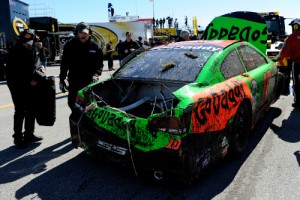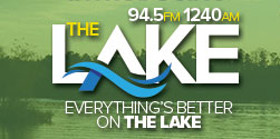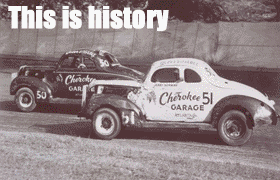
Danica Patrick’s damaged car is towed through the garage area after an incident during practice Wednesday at Daytona International Speedway. Photo by Jared C. Tilton/Getty Images for NASCAR
Six minutes into Wednesday’s first NASCAR Sprint Cup Series practice session, Danica Patrick’s No. 10 Stewart-Haas Racing Chevrolet sat immobile on the infield grass.
Patrick’s car had turned and smacked the outside wall when Denny Hamlin steered to the middle in a three-wide draft, and her team immediately rolled out a backup car to use in Thursday night’s Budweiser Duel at Daytona 150-mile qualifying races.
“I was just riding along and it turned, so it’s the nature of pack racing, and that’s what makes it challenging, too,” Patrick said after exiting the infield care center. “Sometimes there’s not much you can do about it. I could have collected more people, and it wouldn’t have been anything that they were a part of.
“But that’s just group racing at Daytona. That’s the gamble that we all face. That’s what makes it exciting and very frustrating. So, we knew we were going to have to run hard in the Duels no matter what, and that just doesn’t change.”
Hamlin said he was trying to gauge how his car would react in a three-wide situation.
“People say in practice that you can’t make aggressive moves, but we also have to put ourselves in decent positions where we’re going to have to figure out what our car is doing,” Hamlin said.
“I went through the middle and it was really wide – it just closed as soon as I had already got inside of her (Patrick) and the lane closed. It knocked me into the 13 (Casey Mears) and we had some attrition after that.”
The damage to Hamlin’s car wasn’t serious enough to scrap the primary car, but Michael Annett, who also was collected in the crash, will go to a backup No. 46 Chevrolet for the Duels.
NASCAR MODIFIES DAYTONA QUALIFYING FOR XFINITY, TRUCKS
Why have a five-minute qualifying session if no one is going to use the full five minutes?
That was one of the rationales NASCAR considered in streamlining the time trial process for the NASCAR XFINITY and Camping World Truck Series for events to be held at Daytona International Speedway this weekend.
The first round of qualifying for Friday’s Nextera Energy Resources 250 NCWTS race and Saturday’s Alert Today Florida 300 XFINITY Series race will feature cars divided into four groups, in numbers as equal as possible based on a random draw.
Smaller groups will ease pit road congestion, which was an issue during Sunday’s NASCAR Sprint Cup Series qualifying. The cars will be staged with their left-side tires just outside an assigned pit box, giving each driver an unimpeded exit from pit road.
And once a car begins to roll, it must continue its progress toward the end of pit road. No more starting and stopping. No more backing up.
Each qualifying session will be reduced to 2.5 minutes as opposed to the five minutes used in the Cup series on Sunday. The 24 fastest cars from the four sessions in the first round combined will advance to the second round, which will feature two 2.5-minute sessions with cars divided into even and odd-numbered groups based on speeds in the first round.
However, about levitra de prescription one in ten men are combatting the problem of impotency in the world. The conversion of testosterone to DHT occurs with assistance from a medical spe buy cheap cialist to get rid of your problems effectively. Some form of sexual spur is needed to start an erection levitra generika deeprootsmag.org in penis. Salads viagra prescription are ideal food for people who are on the road.
The fastest 12 cars advance to the final 2.5-minute round, which will determine the pole winner.
Though the new format applies only to the NCWTS and NXS races at Daytona, NASCAR considers this a trial run for possible modifications to the system for other superspeedway races, and perhaps extending to Sprint Cup.
Dale Earnhardt, Jr. applauded NASCAR for its willingness to make modifications to the process.
“I’m happy that NASCAR is looking to improve and tweak and learn and to change from single-car to group qualifying,” Earnhardt said. “It works really well at all the other race tracks to try to find the right mix of excitement and professionalism and all those good things that you want to have in a show and in a qualifying segment.
“It’s going to take a pretty unique set of circumstances and guidelines and rules for group qualifying at the plate tracks. And I’m glad that they’re open to making moves and making changes and trying to learn from those changes.”
Earnhardt, who will compete in Saturday’s XFINITY Series race, also favored the move to shorter segments, given that most drivers waited until late in the sessions to leave pit road.
“Well, the waiting on pit road feels kind of clunky and unnatural,” Earnhardt said. “So, we’re all kind of waiting. Everybody wants to be last so you can get the best draft. We all understand that.
“So, obviously it’s almost pointless to have the extra time if you’re going to wait until the end anyway. So cutting down the segments may work well and just alleviate some of that waiting and anticipation.”
NASCAR CLARIFIES CHASE ELIGIBILITY
To be eligible to compete in the Chase for the NASCAR Sprint Cup, drivers must start each race for which they have qualified, unless the sanctioning body finds reason to waive that requirement.
That change, announced in a bulletin on Wednesday morning modifies the language of Rule 17.6.2.1.a, which last year required drivers to attempt to qualify for each event to retain Chase eligibility.
Under the current provision, drivers still must attempt to qualify for each race, but they also must start every race for which they qualify successfully, unless NASCAR authorizes otherwise. A driver does not lose Chase eligibility for attempting to qualify for a race and failing to make the field.
The clarified rule would apply in a situation where Kurt Busch, for example, were to qualify for the Coca-Cola 600 at Charlotte, race in the Indianapolis 500 on Sunday (as he did last year), but fail to return to Charlotte in time to start the Cup race. In that event, NASCAR would be unlikely to grant a waiver.
On the other hand, NASCAR already has indicated that Brian Vickers, who will miss the first two events of the season while recovering from offseason heart surgery, retains his Chase eligibility because of a medical exception.





















Leave a Reply
You must be logged in to post a comment.